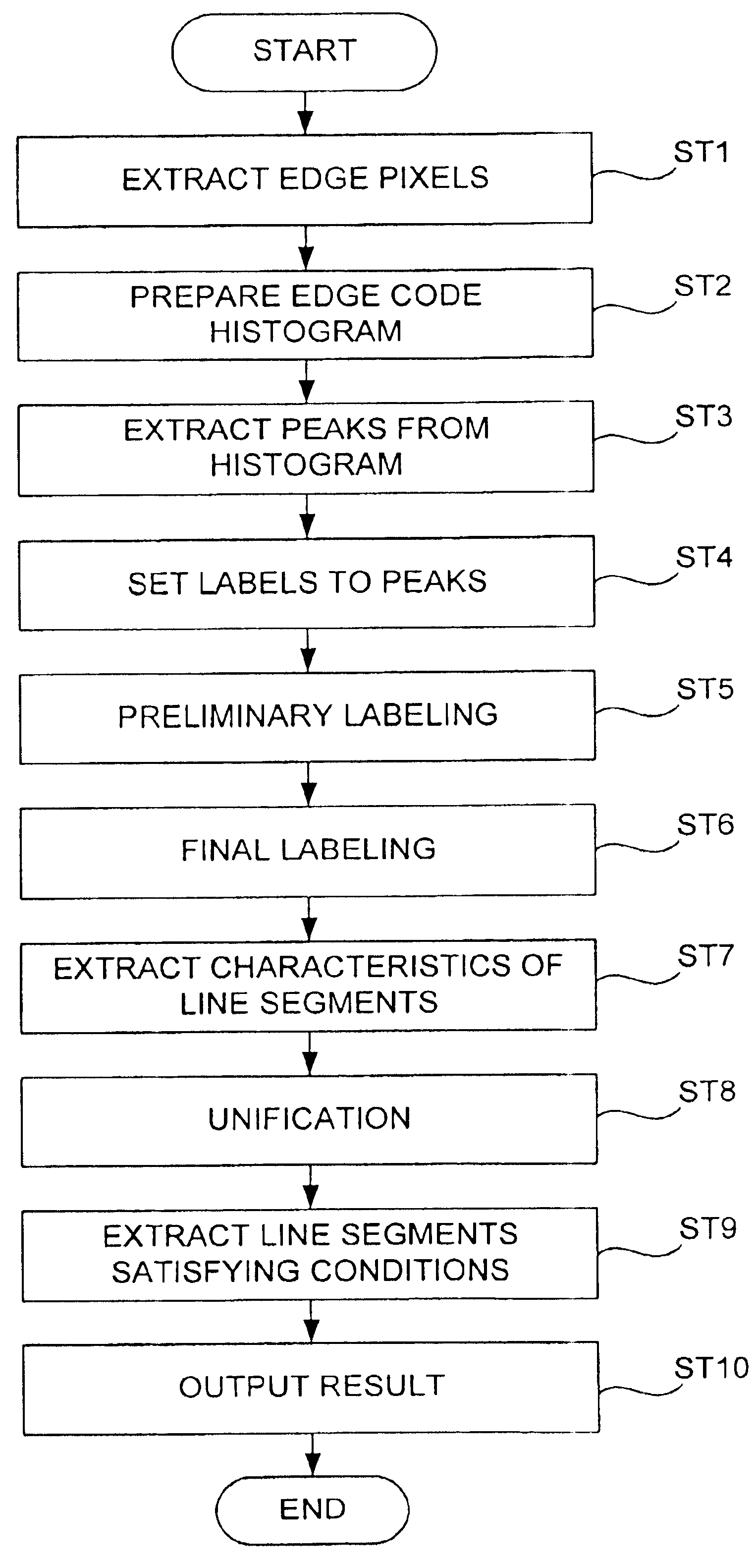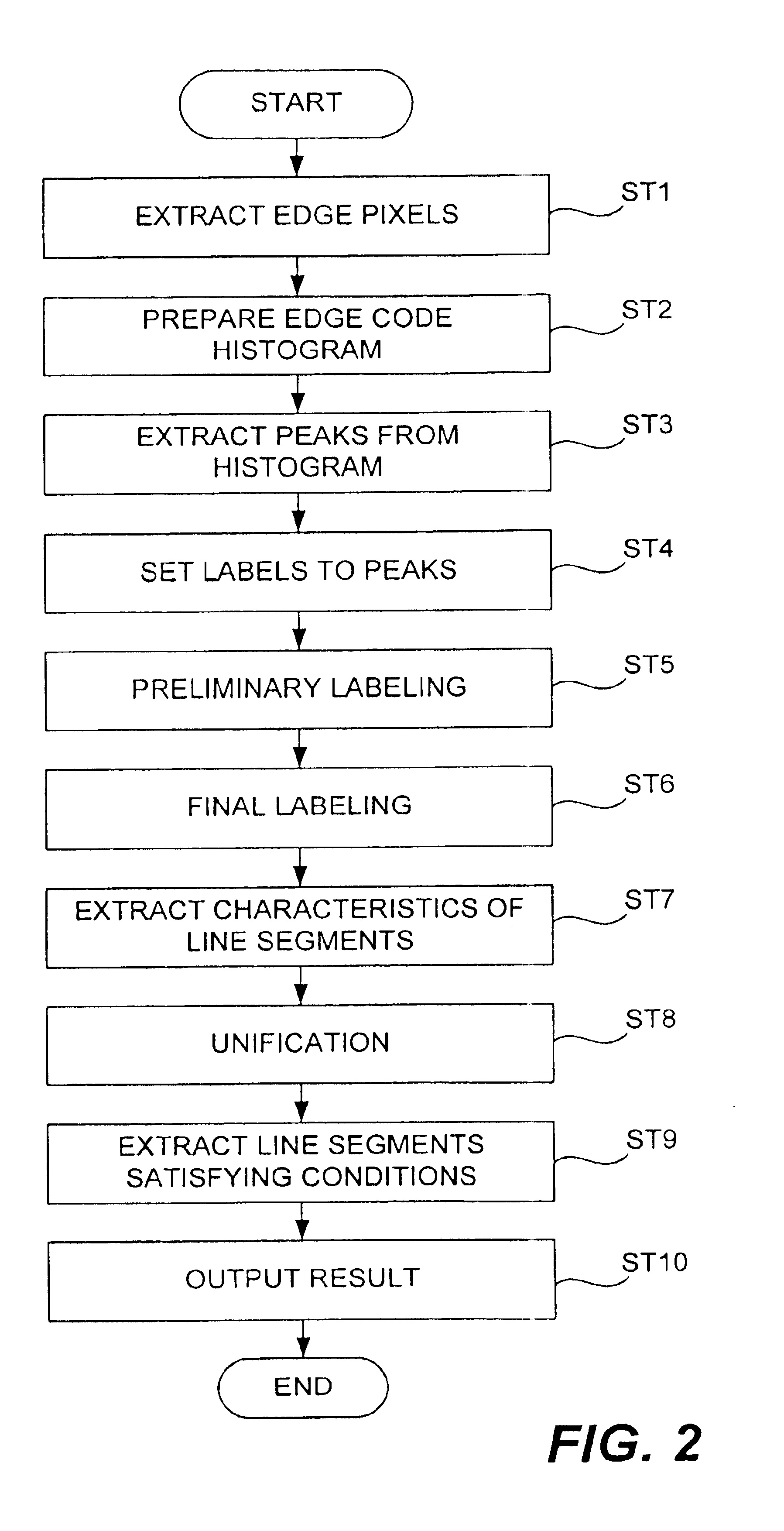Image processing method and apparatus
a processing method and image technology, applied in the field of computer image processing, can solve the problems of not being able to establish an algorithm for extracting straight lines, not being able to dependably extract straight-line portions of contour lines by any of these methods, and not being able to extract straight-line portions of contour lines. , to achieve the effect of accurate and fast extraction of straight-line portions of contour lines
- Summary
- Abstract
- Description
- Claims
- Application Information
AI Technical Summary
Benefits of technology
Problems solved by technology
Method used
Image
Examples
Embodiment Construction
[0043]FIG. 1 shows the structure of an image processing apparatus 1 embodying this invention for extracting on a digital variable-density image (hereinafter simply referred to as the image) straight-line portions on the contour of a target object and, if there are a plurality of such straight-line portions, the crossing points of the extensions of these straight-line portions. The apparatus 1 is composed of an image input device 2, an image memory 3, an image output device 4, a timing controller 5, a character-graphic memory 6, a character memory 7, a control unit 8, a monitor 9 and an I / O port 10.
[0044]The image input device 2 is composed of an interface circuit for receiving variable-density image signals from an analog camera (not shown), an A / D converter circuit for converting the variable-density image signals received by the interface circuit into digital signals, and a filter circuit for cutting noise. The invention, however, is not limited to the use of an analog camera. A d...
PUM
 Login to View More
Login to View More Abstract
Description
Claims
Application Information
 Login to View More
Login to View More - R&D
- Intellectual Property
- Life Sciences
- Materials
- Tech Scout
- Unparalleled Data Quality
- Higher Quality Content
- 60% Fewer Hallucinations
Browse by: Latest US Patents, China's latest patents, Technical Efficacy Thesaurus, Application Domain, Technology Topic, Popular Technical Reports.
© 2025 PatSnap. All rights reserved.Legal|Privacy policy|Modern Slavery Act Transparency Statement|Sitemap|About US| Contact US: help@patsnap.com



